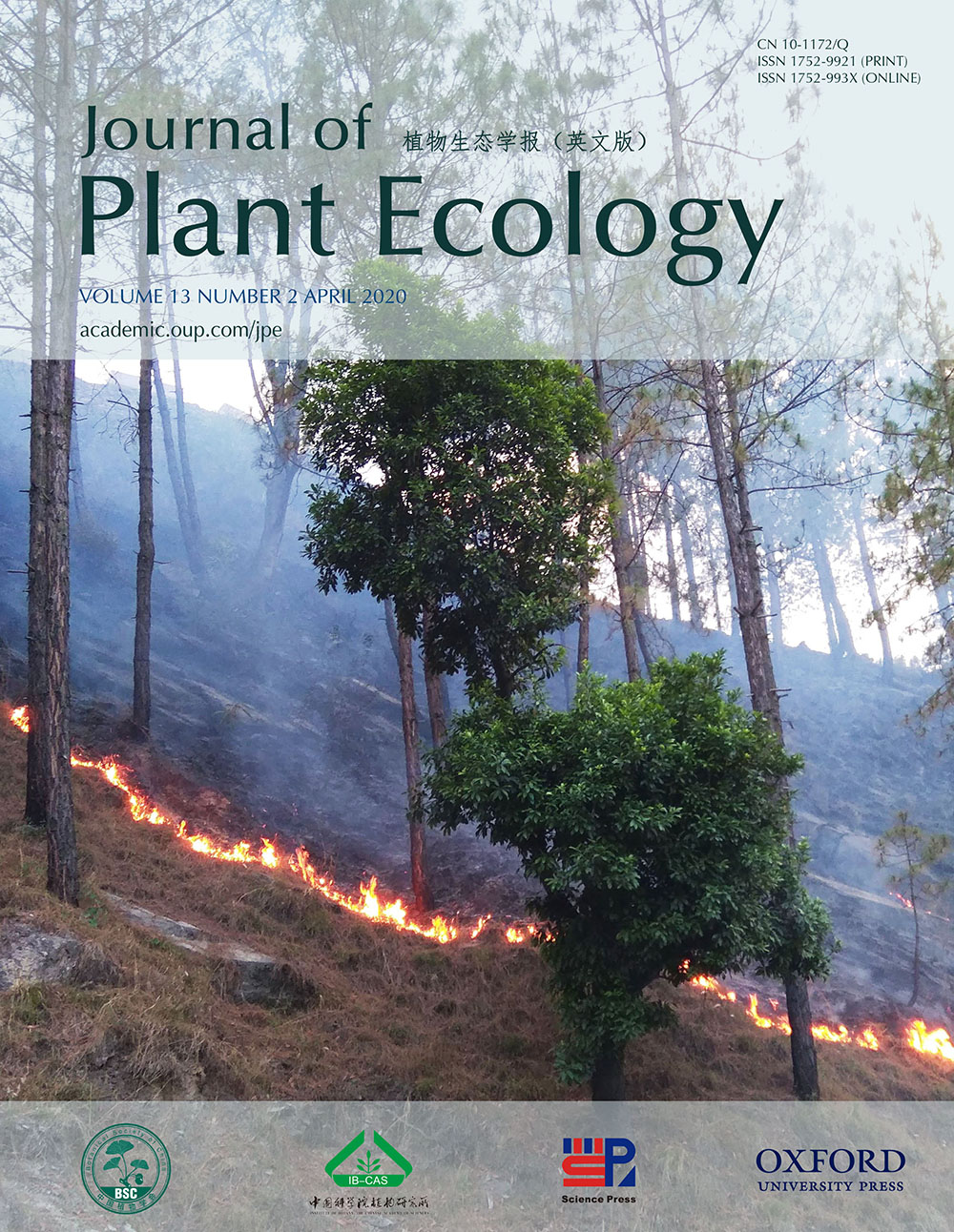Qiong Cai, Chengjun Ji, Xuli Zhou, Helge Bruelheide, Wenjing Fang, Tianli Zheng, Jiangling Zhu, Lei Shi, Haibo Li, Jianxiao Zhu and Jingyun Fang
Aims
There are different components of carbon (C) pools in a natural forest ecosystem: biomass, soil, litter and woody debris. We asked how these pools changed with elevation in one of China’s ecologically important forest ecosystem, i.e. beech (Fagus L., Fagaceae) forests, and what were the underlying driving factors of such variation.
Methods
The four C pools in nine beech forests were investigated along an elevational gradient (1095–1930 m) on Mt. Fanjingshan in Guizhou Province, Southwest China. Variance partitioning was used to explore the relative effects of stand age, climate and other factors on C storage. In addition, we compared the four C pools to other beech forests in Guizhou Province and worldwide.
Important Findings
The total C pools of beech forest ecosystems ranged from 190.5 to 504.3 Mg C ha–1, mainly attributed to biomass C (accounting for 33.7–73.9%) and soil C (accounting for 23.9–65.5%). No more than 4% of ecosystem C pools were stored in woody debris (0.05–3.1%) and litter (0.2–0.7%). Ecosystem C storage increased significantly with elevation, where both the biomass and woody debris C pools increased with elevation, while those of litter and soil exhibited no such trend. For the Guizhou beech forests, climate and stand age were found to be key drivers of the elevational patterns of ecosystem and biomass C storage, while for beech forests globally, stand age was the most important predictor. Compared to beech forests worldwide, beech forests in Guizhou Province displayed a relatively higher biomass C accumulation rate, which may be explained by a much higher precipitation in this area. The present study provides basic data for understanding the C budgets of Chinese beech forests and their possible roles in regional C cycling and emphasizes the general importance of stand age and climate on C accumulation.
 Volume 13 Issue 2
Volume 13 Issue 2






